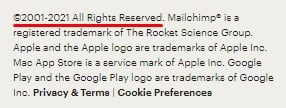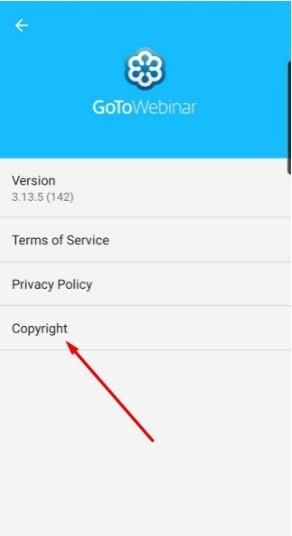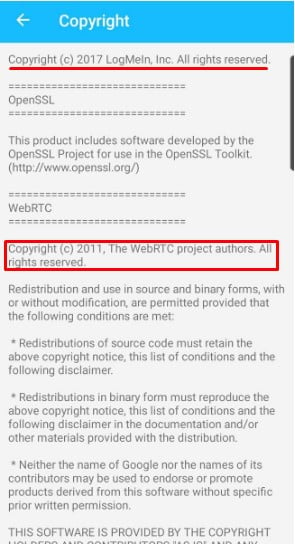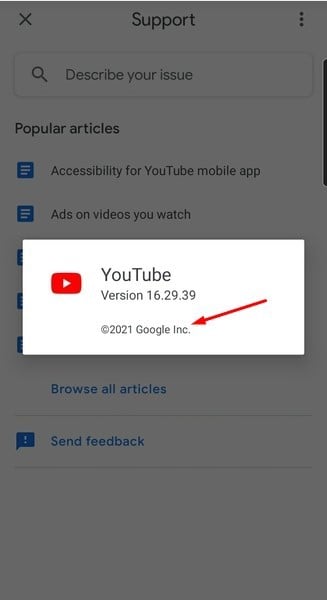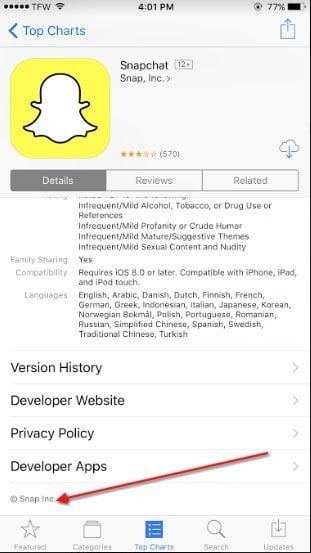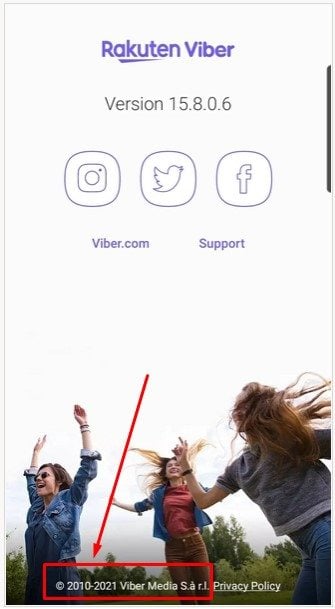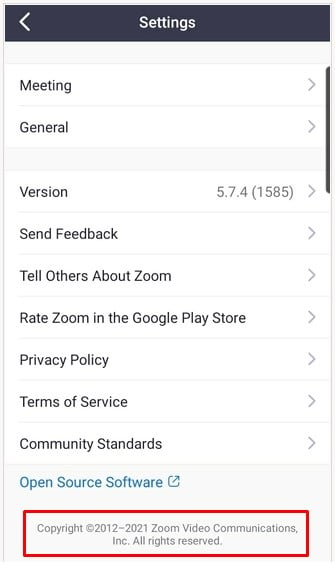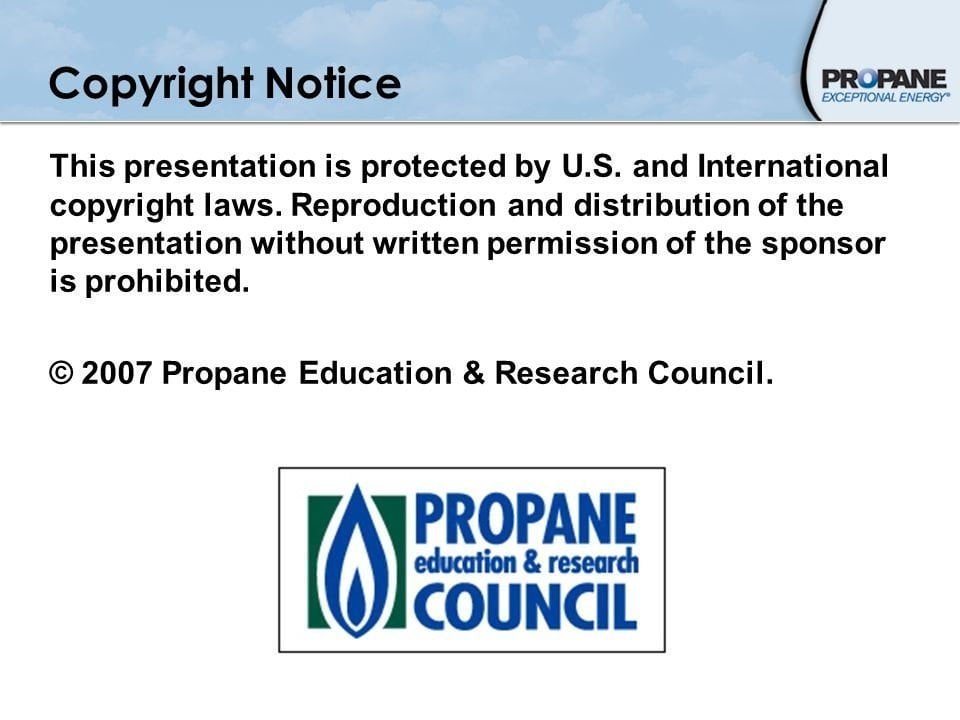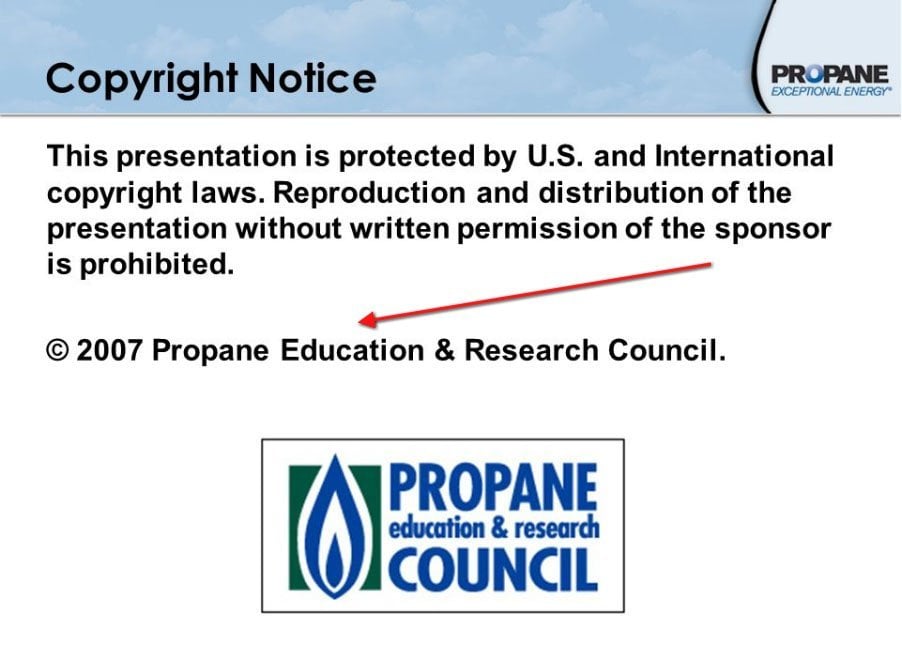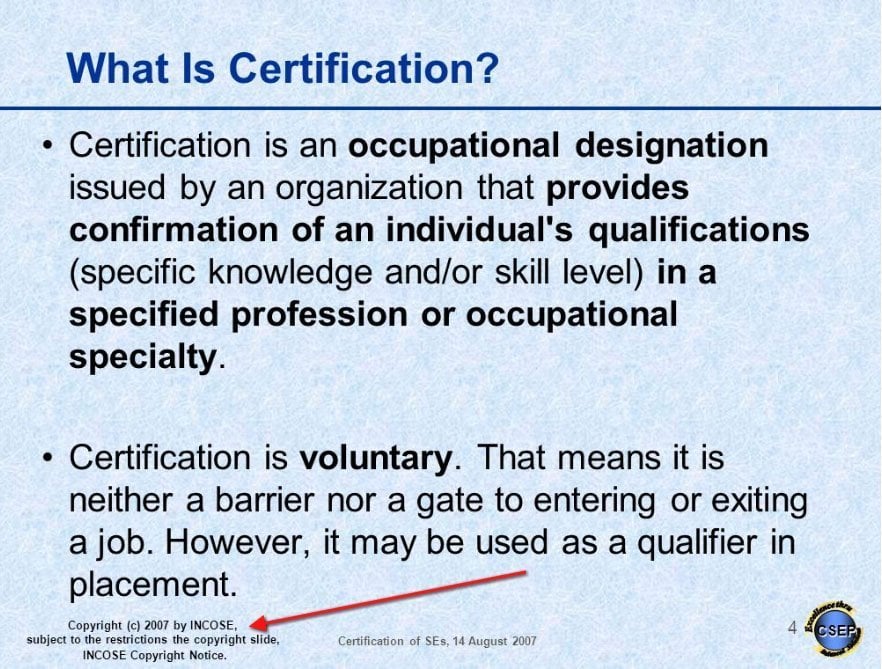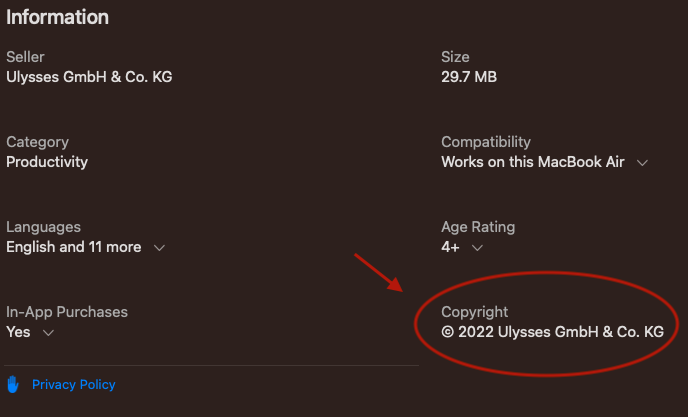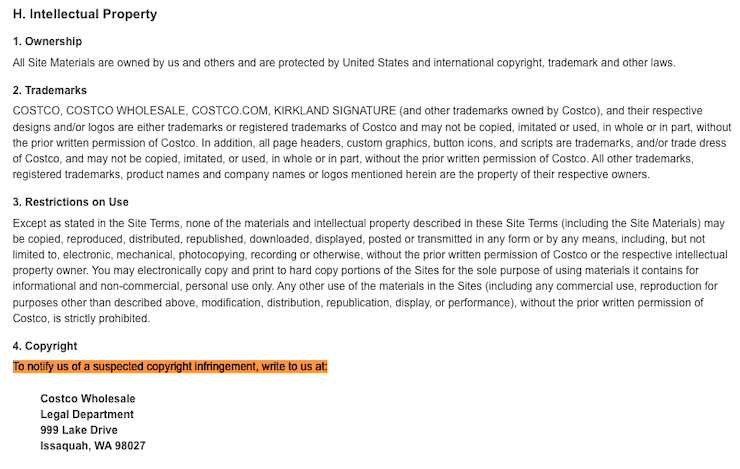Intellectual property rights protect products of the mind. Two of the most common intellectual property rights are copyrights and trademarks. A copyright protects original works of authorship, and trademarks act as source identifiers. It is unlikely that a single word can be subject to a copyright; however, a trademark might offer the type of protection sought.
Copyrights and Words
Copyrights are protections for “original works of authorship,” protection granted under the U.S. Constitution. If a person owns the copyright to an original work, that person may exercise certain rights, such as the exclusive right to publicly display the work or to recreate copies of the work.
Generally, words in and of themselves are not sufficiently original to constitute original works of authorship. Originality is the primary issue when assessing whether a particular work is capable of copyright protection, and a single word typically does not possess sufficient originality to be copyrightable.
Trademarks and Words
Even if the word is not subject to copyright protection, it might be capable of being a trademark. A trademark is a source identifier; it identifies goods or services offered in commerce. If a person wants to take commercial advantage of a word – most likely so consumers will associate that word with the person’s business – a trademark might accomplish such a task.
Legal Protections
Even assuming a word can be copyrighted, the holder must take certain steps to take advantage of those protections. Before a copyright holder can bring an action for copyright infringement, she must register her copyright with the Library of Congress. Likewise, trademark protection arises only if another person is using a confusingly similar mark in commerce. Because of the various legal hurdles associated with copyrights and trademarks, it is important to speak to an expert before pursuing any course of action.
Intellectual Property Limitations
Although a copyright or a trademark affords certain protections, there are limitations. Copyrights do not come into play if the use in question is considered “fair use.” Fair use includes transforming the particular copyright into something that essentially constitutes a new original work – an artist’s rendition of a famous work of art could be considered transformative, which would mean it did not violate the original artist’s copyright. Likewise, trademarks arise because of use in commerce. The law doesn’t protect copyrights and trademarks if the work does not fall within the range of the particular law.
from the hopefully-not dept
Glyn Moody points us to an interesting copyright ruling in Poland, where a company tried to claim that it could not just trademark a made up word, Jogi (referring to yogurt), but also that it could copyright the word. Apparently there was some confusion about the ruling, because the Polish Supreme Court (before issuing the full ruling) suggested that you could copyright a single word — but the full decision indicated that this would only be possible in truly exceptional situations:
The Supreme Court stated that although newly coined words or names could theoretically be protected by copyright, this was only exceptionally possible, i.e. when a word in question possessed an extraordinary degree of originality. Quite forcefully the court observed that the belief every subjectively new creation of the human mind was a copyright work had no legal foundation and could even lead to the deprecation on the notion of “creativity”. Although the decision explicitly confirms that works created solely for utilitarian purposes (including industrial products) may be protected by copyright (but this has not been seriously questioned for a long time now), it also takes the view that the purpose of a work can not in itself be sufficient to ensure copyright protection. In other words, the Supreme Court rejects the idea that the element of creativity can be discerned in the particular way the work is used. Consequently, in the case at hand the fact that the plaintiff “created” the connection between the word (trademark) and a certain category of goods is not enough ? the word as such must be autonomously individual and should be capable of being used on various fields of exploitation. The Court correctly observed that the plaintiff essentially wanted to protect the idea of using a certain word in a certain context, whereas ideas are outside the scope of copyright protection.
While this ruling appears to have gotten it right, the attempt to copyright a single word (over which a trademark was already held) shows the constant efforts by those with government granted monopoly privileges to try to expand those rights. It’s an unfortunate symptom of copyright maximalists continually pushing the myth of copyright as “property,” that people naturally seek to expand their “property” rights well beyond what the law is designed to allow.
Filed Under: copyright, poland, word
A copyright notice is a short line of text that lets the public know that your work is protected by copyright law and is not to be copied.
These copyright notices are widely used and can be found all over, from websites and blogs, to films and music.
This article will further explain what a copyright notice is and some of the benefits that come with having one, while helping you create your own.
What is Copyright?
Copyright refers to a branch of intellectual property law that aims to protect creations such as books, music and art.
When you create something new, copyright law automatically gives you full ownership rights in your creation.
For example, if you write a screenplay, novel, or even a blog post, you’ve just created something new. Once you put that creation out into the world and allow the public to access it, copyright law kicks in to help make sure that someone else can’t steal a part of (or all of) your creation.
If someone does do something to violate your copyright, like copy your blog post and attribute it to himself, or try to claim authorship of your screenplay, copyright law makes it possible for you to enforce your rights against the other and maintain your ownership.
Here’s an example of a standard copyright notice in place in the footer of Sephora’s website:
Do You Need to Register Your Copyright?
No, you do not need to register your copyright.
While it’s not required to register your copyright, registering comes with some benefits that make the time and fee worth spending.
Perhaps the biggest benefit by far is that you’ll have the ability to bring a lawsuit against someone who infringes your copyright if you’ve registered your copyright.
While it’s not unheard of to wait until someone infringes your rights to register your copyright and bring suit, you’ll have a much stronger case if you can show that your copyright has been registered for a longer period of time.
For more information on U.S. Copyright registration, visit here. In the EU, you can find information and resources here.
Do You Need a Copyright Notice?
While copyright notices aren’t required by any law, they’re incredibly helpful to people who wish to legally protect their work.
Basically, anything that you create and share with the public but still keep the public from copying or appropriating in full or in part would benefit from having a copyright notice.
Here are a few of the benefits of having a copyright notice in place of your work:
- People will be put on notice that your work is yours, and that it is subject to copyright,
-
In the event that you need to bring legal action against someone for copying your work, having a copyright notice in place can be a very useful thing.
Showing the court that you had a copyright notice up may help you support your case against infringers by making it easier for you to prove that the alleged infringer knew, or was put on notice, that your work was copyrighted.
Note, however, that due to the complex nature of copyright law, it hasn’t been proven in court that a copyright notice will make an absolute difference in your case given all of the other potential factors involved in copyright infringement.
- A copyright notice can help deter infringement/plagiarism, and
- You can use the notice to declare what rights you wish to maintain.
How to Write a Copyright Notice
Each copyright notice should include 4 main components:
- A copyright symbol, or word
- A date
- An author’s name, and
-
A statement of rights
A statement of rights is not a requirement. By default, a copyright notice will work to reserve all of your rights, so stating something like «All Rights Reserved» isn’t technically necessary.
However, it is commonly seen this way and clarity of your rights can’t hurt.
Copyright Symbol
The universally accepted symbol for a copyright is the letter C in a circle: ©
You can also use the word «copyright.»
This symbol or word should be placed at the beginning of your copyright notice:
Copyright Date
For the copyright date, you’ll want to use only a year or years. Months or days are not used.
The year you’ll use will be the year of publication, or, in other words, the year your work gets released into the public in a way that copyright law would matter.
If you create a website and only share it with your close friends, you won’t need a copyright, but if you make it at all accessible to the general public, you do, and the date should be the year you make it accessible.
Single year versus range of years
If you keep a mix of old and new content in your copyrighted medium, your copyright date may be a range rather than a single year.
Say, for example, you create a website and the overall content is from 2015 and unchanged. You also may have a blog post or image from an earlier year that you keep up on your website. Your copyright date will be 2015 — «current year.»
The Amazon website uses content that originated back in 1996 along side constantly-updated and new material, so its website copyright date has the range of 1996 to 2021:
However, when emails are sent out, they only have one date: the year they’re sent during. That’s because the email itself and the information in it is put together and sent out in that year:
Depending on the nature of your material, your date can be a range or a single year.
The copyright author’s name can be the name of an individual, multiple individuals, an organization’s name, or a business/corporate name, so long as it identifies who holds the copyright on the material.
This helps people identify you or your business and shows clear and specific ownership of the material:
Copyright Statement of Rights
The «statement of rights» is where you can let people know what rights you’re holding onto with your copyright.
There are 3 main types of rights most copyright notices will maintain:
-
All Rights Reserved. You keep all rights to your material.
This is by far the most commonly used and seen statement of rights in copyrighted materials.
-
Some Rights Reserved. Seen in Creative Commons licensing.
You may allow use of your materials under certain circumstances, like only with full attribute to you, and no alteration can be done to your original material.
Stock photos are a common example of this reservation of rights.
-
No Rights Reserved. Sometimes you’ll want to declare ownership of something, but not make that restrictive for the rest of the world.
Interestingly, the famous «I <3 NY» logo was designed by Milton Glaser in 1977 and he kept no personal copyright on the design.
(The city of New York, New York does have trademark rights to the image, but that’s another article topic.)
Checklist for Copyright Notices
What is copyrightable?
Any original work that you author or create is copyrightable, including music, websites, art, literature, computer software, architectural design and other tangible creative creations.
You can’t copyright ideas, but you can copyright your personal and unique expressions of ideas.
When to add a notice?
You should consider adding a copyright notice if you’re releasing something into the public that you created and want to protect.
If you’ve created a mobile app, recorded a song, written a book, blog post, or other published writing, or any other unique expression of ideas, you will want a copyright notice.
Where to place a notice?
The main point of your notice is to make sure that anyone who views your work knows that the work is copyrighted.
This means that where you should place your copyright notice will change depending on what type of material or format you’re putting your notice on.
For example, a website should have a notice on the bottom of every page, while a book should have just one notice, most likely at the beginning of the book.
Some other standard places for copyright notices include the following:
- CDs, cassettes and LPs should have one copyright notice on any included and accompanying inserts, sleeves or booklets
- Promotional Items, leaflets, commercial documents, etc. should have one copyright notice per item
- Manuscripts and screenplays should have one copyright notice on the front
- Digital photography, graphic design and other digital artistic mediums should have one copyright notice towards the bottom of the work, or a watermark notice if desired
Here are some examples from different commonly used mediums that have copyright notices:
Examples of Copyright Notices
Examples of Copyright Notices on Websites
Copyright notices can help protect the textual and visual content of your website. Most websites include a copyright notice in the footer of the site, and on every single webpage.
eBay includes a copyright notice that reserves all rights for itself, and has protected material from 1995 to 2021:
NPR’s website footer includes a small ©, the date and the NPR name. While there isn’t a statement of rights, that’s fine.
Remember how I mentioned earlier that a copyright notice works to protect your rights, so the copyright symbol, date and author name (NPR) is enough to let potential infringers know that NPR has copyrighted this work:
Using a circled «C» instead of the word «Copyright» is also sufficient as this symbol is universally recognized as the symbol for a copyright.
MailChimp doesn’t put its name in its copyright notice.
However, it does put its name immediately following the copyright notice when it mentions it being a trademark of The Rocket Science Group. This is sufficient to let potential infringers know that the copyright belongs to The Rocket Science Group and MailChimp.
Examples of Copyright Notices in Mobile Apps
It’s easy to include a copyright notice somewhere within your mobile app. Different companies display their notices in different locations throughout their apps.
The GoToWebinar app includes a copyright option in its menu where important legal agreements are listed:
When the copyright option is tapped, a screen opens up with the copyright notice at the top, plus additional copyright information:
The YouTube mobile app includes a short and simple copyright notice:
Copyright notices can be included in app store listings for mobile apps, as seen in the example below from Snapchat:
This notice is very short and concise, and is just enough to let users know that the app is protected by copyright laws, and that Snap, Inc. has the rights.
Rakuten Viber’s mobile app lists its copyright notice at the bottom of the screen in a small but still noticeable way:
And Zoom includes its copyright notice at the bottom of its Settings menu screen:
Examples of Copyright Notices in Presentations
You can either include a copyright notice slide, or place a small copyright notice at the bottom of each slide from your presentations.
Here’s an example of a slide that can be inserted into a presentation to make copyright rights known:
The smaller standard copyright notice can then be included at the bottom of each additional slide if desired:
Here’s an example of a copyright notice embedded in the bottom of a slide within a presentation:
To summarize, having a copyright notice is a quick and easy way to put the world on notice that your content is yours, and is protected. While there can be some variety to the specific structuring and details in a copyright notice, the standard structure has 4 components: The copyright symbol or word, the date, the copyright owner’s name, and the rights being reserved.
Add this short, simple notice to your creative content to help declare and protect your ownership rights.
FAQ: Sample Copyright Notices
Here is a list of frequently asked questions that you may find useful.
Copyright notices are not required by law. However, having one helps protect your creative content so you should have one even though not required.
Having a copyright notice puts the public on notice that your content is protected and copyrighted.
This will help keep most cases of infringement from occurring. If any cases do occur, having a copyright notice will help you prove your case in court that the copyright infringer was put on notice that your content was protected.
Original works you create and wish to protect as your own should have a copyright notice. This includes artistic works (such as graphic design and product design), literary works (such as blog posts and website content), audio and video content, software and other creative works.
You do not need to register your copyright notice. However, doing so comes with a big benefit.
When your copyright notice is registered, you’ll have the ability to bring a lawsuit against anyone who infringes your copyright. While you can wait until someone infringes your copyright to formally register it and bring suit, your case in court will be much stronger if you’ve had your copyright registered for a longer period of time.
Not at all. In fact, creating a copyright notice is very simple and takes just a few moments.
A copyright notice has just 4 components:
- The copyright symbol or the word «copyright»
- A date or date range
- The author’s name
- A statement of rights
Your copyright notice should contain the following 4 pieces of information:
- The copyright symbol or the word «copyright»
- A date or date range
- The author’s name
- A statement of rights
Display your copyright notice in your website footer. This is the most common place for displaying it, and where users know to look.
In mobile apps, you can display your copyright notice in an «About» or «Legal» menu since there isn’t a static footer.
Disclaimer
This article is not a substitute for professional legal advice. This article does not create an attorney-client relationship, nor is it a solicitation to offer legal advice.
So, in everything from World of Warcraft to Dungeons and Dragons, even Warhammer and an assortment of other games, both table top and computer based, there’s Arcane magic. I’ve written a few books and, without thinking, I used the term Arcane to be the general name for magic practiced by witches and warlocks and prayer magic used by the clergy. I never thought about it until now, but is Arcane, or Arcane magic, a copyrighted word/phrase/term?
To clarify, the spells in my work aren’t direct copies of any from those other games, it’s simply the usage of what I at first considered a generic word. Could there be trouble down the line?
Examples of spells used in my work:
Portal magic to move across large distances,
«energy beams» for combat purposes, and
magical infusion.
Not entirely sure if this is the best place for this question, but I’m just wondering if there’s any danger of it becoming problem down the line. Also, I apologize if I’m misunderstanding the usage of copyright, but as a relatively new author, I’m trying to make sure I’m not setting myself up for trouble in the future.
Subjects>Law & Government>Law & Legal Issues
Wiki User
∙ 11y ago
Best Answer
Copy
No; single words and short phrases are not eligible for
copyright protection.
Wiki User
∙ 11y ago
This answer is:
Study guides
Add your answer:
Earn +
20
pts
Q: Can you copyright the word dictionary?
Write your answer…
Submit
Still have questions?
Related questions
People also asked
Copyright law automatically protects your original materials and helps prevent theft and other unauthorized uses. But posting a copyright disclaimer on your website or app informs users that you know the law and retain certain rights over your content.
Continue reading to learn more about copyright notices and why you might need to post one on your website or app. Then, we’ll look at real-life copyright examples and teach you how to write your own copyright notice.
- What Is a Copyright?
- Copyright Examples & Types
- Do You Need a Copyright Notice?
- Benefits of a Copyright
- How To Write a Copyright Notice
- How and Where To Display a Copyright Notice
- Copyright Notice Examples
- Copyright FAQ
- Summary
What Is a Copyright?
A copyright is the exclusive legal right over how original content or materials you’ve made get copied, shared, reproduced, printed, performed, or published by others.
In other words, copyright provides you with exclusive rights to:
- Reproduce your work
- Distribute or sell your work
- Display or perform your work publicly
- Create derivative works based on the original work
It also allows you to authorize or restrict others in exercising these rights, further protecting your original works if they’re ever stolen or plagiarized.
A copyright usually consists of the following four components, which we’ll discuss in more detail later in the article:
- Copyright symbol © or the word “copyright”
- Year the material was published
- Name of the copyright owner
- What rights are retained by the copyright
Some examples of copyrighted works include:
- Art
- Literature
- Videos
- Images
- Photography
- Choreography
- Music
- Sound clips
Copyright Laws Around the World
Copyright laws vary around the world, and there is no global version of copyright, but many countries are part of the Berne Convention, which deals with protecting original works and the authors’ rights over them.
Established in 1886, countries under this convention agree to recognize a set of legal principles for protecting original content across country borders.
However, there are subtle differences in how copyright law works in each location, so we’ll briefly touch upon the relevant laws in the following countries, all of which are part of the Berne Convention:
- The United States
- The United Kingdom
- The European Union (EU)
- Australia
- Canada
Copyright in the US
In the US, your original materials are protected by copyright law as soon as you create something and release it publicly, even if you don’t post a copyright notice.
But if you want to ensure further protection of your works and potentially limit paying costly legal fees down the road, adding a copyright notice to your content may help deter:
- Copyright infringement
- Unauthorized reproduction, distribution, or displaying of copyrighted materials
You may also choose to register your copyright with the US Copyright Office.
Copyright in the UK
Copyright laws in the UK protect your original materials automatically. You do not have to apply for protection, register your work, or pay any fees for the law to protect your original creations, including:
- Literary works
- Dramatic works
- Music
- Works of art
Copyright in the EU
In the EU, copyright applies to your intellectual property until 70 years after your death or 70 years after the death of the last surviving author in cases of joint authorship.
But in the EU, there is no equivalent “fair use” doctrine, like in the US. Instead, there is a list of explicit exceptions that cover specific scopes.
Copyright in Australia
Like in the US, UK, and EU, Australia’s copyright law protects your creative works the moment you put your creative idea on paper, online, or any other form of documentation.
You do not need to register your work, as the protection is free and automatic under Australia’s Copyright Act 1968.
Copyright in Canada
As of 2022, copyright in Canada applies to your work automatically and lasts the author’s lifetime plus 70 years past their death.
Previously, the protection only lasted for 50 years past the author’s death.
What Is the Difference Between a Copyright and a Trademark?
The difference between a copyright and a trademark is the type of content each notice protects — trademarks apply to logos, slogans, and brand identity. In contrast, copyright applies to original tangible materials and creative works.
You technically own a trademark as soon as you start using a name or brand identity along with your goods or service, making it similar to how copyright law works.
While you’re not legally required to register your trademark with the United States Patent and Trademark Office (USPTO), doing so gives you broader rights and protections than when left unregistered.
For example, registering your trademark in the US grants you national recognition and creates nationwide rights.
Once registered, you can use the trademark symbol, which looks like an R with a circle around it: ®
But if your trademark is unregistered, you must use the abbreviation ‘TM’. However, if you’re trademarking a service, you may also use the initials’ SM’, meaning service mark, but both are still referred to as trademarks.
You can use the logo or abbreviations whenever you use your trademarked identity, as shown in the example screenshot below from the official International Olympics website.
However, if you prefer, you may also format it as superscript or subscript text.
Copyright Examples & Types
There are technically two types of copyright examples, one allows you to reuse copyrighted materials in specific ways for “fair use” purposes without the owners’ permission, and the other protects your content from reuse or reproduction as the owner of the work.
Let’s go over each type of copyright example in a little more detail in the following sections.
Copyrighting Works of Creative Expression
According to the US Copyright Office, copyright applies to all original works of creative expression captured in a tangible form and goes to the work’s original creator, who can choose to sell their rights to other parties.
Some examples of works that can be copyrighted include:
- Architectural works
- Sound recordings
- Audiovisual works — including motion pictures
- Artworks
- Dramatic works — including any accompanying music
- Musical works — including any accompanying words
- Literary works
- Choreographic works
That said, there are limitations to the types of work this protection applies to.
The following examples of content aren’t protected by copyright:
- Ideas, methods, systems, concepts, or discoveries
- Works that don’t have a tangible form (i.e., not captured in a physical medium)
- Titles, names, slogans
- Familiar symbols or designs
- Variations of typefaces or lettering
- Ingredient lists
“Fair Use” and Section 107 of the Copyright Act
You are allowed to legally reproduce or reuse certain aspects of a copyrighted work without the owners’ explicit permission for the following reasons, which qualify as “fair use” under section 107 of the Copyright Act:
- Commentary — i.e., copying paragraphs from a news article, scientific paper, or medical journal for educational purposes
- Criticism — i.e., quoting song lyrics or summarizing movie scenes for a critical review
- Parody — i.e., mimicking, making light of, or satirizing something in a comedic way
If you’re using someone else’s content for “fair use” purposes, it’s in your best interest to post a copyright disclaimer or a fair use disclaimer stating as much to help prevent an unfair or unnecessary copyright strike.
However, a disclaimer cannot guarantee that you won’t receive an unfair strike.
For this reason, we recommend getting explicit permission from the copyright owner to use their materials whenever possible.
While “fair use” copyrights are essential in many cases, the focus of this guide is primarily on the copyright that applies to protecting your usage rights over original content.
Do You Need a Copyright Notice?
While you don’t legally need a copyright notice for the law to cover your original works, it’s a best practice to put a disclaimer on all your published materials for the following reasons:
- Reason #1: Having a copyright notice posted on your website or app helps add an extra layer of protection if infringement does occur because you can prove that the infringer should’ve seen the copyright and been aware that your content was protected
- Reason #2: Copyright notices are very quick and easy to make and typically consist of four concise components
- Reason #3: Including one acts as a visual reminder to your users that your work is protected by copyright, and users may assume otherwise if they do not see a notice
- Reason #4: A visible copyright reduces the chances of copyright infringement because it proves that you’re aware of the law and are willing to follow through on your rights if anyone misuses your work
It’s also in your best interest to post a fair use copyright notice if you’re reusing someone else’s copyrighted materials for commentary, criticism, or parody purposes.
While it can’t prevent someone from submitting an unfair copyright strike against you, it may help reduce the chances.
Benefits of a Copyright
There are several benefits to including a copyright on your website or app:
- They’re quick and easy to make and publish
- They provide an extra layer of protection over your intellectual property
- Adding one now may help save you thousands of dollars in legal fees down the road
Let’s go over these benefits together in a little more detail.
Copyrights Are Quick and Easy To Make
Making a copyright for your website or app is very quick and easy, so there’s little to no reason not to include one to remind users that you own the rights over your content.
There are only four simple components you need to include:
- The copyright symbol © or the word “copyright”
- The name of the copyright owner or author of the work
- The year the content was published, which can be different from the year of creation
- Your statement of the rights you’re reserving over the materials
This screenshot labels all four copyright components from the United Parcel Service’s (UPS) website.
As you can see, they used both the copyright symbol and the word “copyright”, included a range of years, named themselves as the copyright owner, and reserved all rights.
We recommend you post a copyright notice in the footer of your website, like how UPS did it above. It’s fast, easy, and helps protect your materials better.
Copyrights Provide Extra Protection
Including a copyright notice protects your creations because it gives you something to point to as proof of ownership. It also helps you prove that any offenders should’ve seen the statement and been aware of the rights you retained over the materials.
Plus, not all users know about copyright laws. If they don’t see a notice, they might wrongfully believe they can freely use your materials when that is not legally the case.
Copyrights May Help Save You Money in Legal Fees
A copyright notice is usually free to post on your website or app and may reduce the number of copyright infringement cases you experience — that’s much cheaper than waiting until you have to rely on a lawyer.
In 2022, the average cost of a lawyer specializing in intellectual property cases averaged $342 an hour. (Statista)
How To Write a Copyright Notice
To write your own copyright notice, you must include some or all four of the following components in this order:
- The copyright symbol © or the word “copyright”
- The year the material was published — you may include a range of years if your content is regularly updated, and this can be different from the creation date
- The name of the copyright owner — this can be an individual, multiple people, an organization, or a business
- Your statement of rights you wish to retain over your materials — some, all, or none
What do the different statements of rights mean?
- All rights reserved: You own and retain all rights to your work
- Some rights reserved: You allow the use of your materials under certain circumstances, which you should specify in an intellectual property rights clause somewhere on your site, like in your terms and conditions agreement
- No rights reserved: You release your work into the public domain
Putting the statement of your rights in your copyright is optional. If you don’t add it, then it’s legally assumed you retain all rights.
How and Where To Display a Copyright Notice
Your copyright notice should be displayed conspicuously so that anyone who views your work knows that it’s copyrighted.
The placement of your copyright notice depends on the type of work or content you’re putting your notice on, but we suggest the following locations:
- In the footer of your website
- Mobile app description pages, purchase pages, or within the app itself
- In your email footer
- On any downloadable materials
Let’s discuss why these are good places to include your copyright in more detail in the next sections.
Copyright in Your Website Footer
The most common place to put a copyright notice is the footer of your website, so we recommend including it there, as this is where users expect to find it.
We recommend using a visible, readable font and including as many of the components you feel are necessary to establish ownership of your content.
In the screenshot below, see a copyright example from the footer of the Starbucks website.
Copyright in Your Mobile Apps
For app developers, you should include a copyright on the description or purchase pages of any app store that hosts your product so users see it before downloading and accessing your services.
Below, see a copyright example from Ulysses, a one-stop writing app hosted in the Apple App Store.
Copyright in Your Email Footers
If you send marketing emails to your consumers that contain product updates, videos, imagery, or written materials you don’t want to be copied and reproduced, include a copyright in the footer of all of your emails.
Take, for example, the copyright from Apple’s iCloud marketing emails, pictured for you below.
Copyright on Downloadable Materials
If you want to protect content you allow users to download, include a copyright notice on the document or product.
By doing so, you ensure that anyone who accesses the downloaded versions of your materials knows it’s protected by copyright law.
Additional Copyright Locations
There are some other examples of standard copyright notice placements for various works, like:
- Books or ebooks often have a copyright page at the beginning or end of the book
- Photos and other forms of digital art often have a copyright near the bottom of the work or a watermarked label
- YouTube videos often have a copyright notice in the video description or video credits
But it’s important to note that you can’t just slap a copyright on whatever you want and expect it to legally protect you — there are exceptions, like fashion or personal styles, commonly known information, or anything considered an idea, method, or system.
Copyright Notice Examples
Now let’s look at some real examples of copyright notices, which we’ll break down into the four relevant components mentioned above.
Pixar’s Copyright Example
In the screenshot below, see the components included in Pixar’s copyright, which is in their website footer and follows the standard copyright format.
As you can see, they include the following copyright components in their notice:
- They use the © symbol
- 1986-2023 is the range of dates covered by their copyright
- Disney/Pixar is the name of the copyright owner
- There is no statement of rights, which means they reserve all rights over their property
Like the Pixar copyright example, your statement can include a range of years if you’ve expanded or updated your content since the original publication date.
In the following screenshot, you can view the clause Pixar includes in their terms of use agreement that expands upon their copyright and lists all intellectual property it covers.
We also recommend including a similar clause in your terms of use agreement.
It helps answer any questions users might have about what your copyright covers and explains the legality of reusing, redistributing, or copying your content.
The Yale University Art Gallery Copyright Example
Next, let’s look at a copyright example from the website footer of the Yale University Art Gallery, screenshotted below and labeled based on the four components.
Yale clearly includes all four components in their copyright notice:
- They use the word “copyright” and the © symbol
- The copyrighted year is 2023
- The name of the copyright owner is the Yale University Art Gallery
- They have reserved all rights
Yale also links their terms and conditions directly under their copyright. When clicked on, you can navigate to a copyright page that informs users that they trademarked their branding, as shown below.
As the highlighted text above explains, the Yale-specific trademarked branding and materials cannot be reproduced except to provide attribution.
The notice then goes on to explain that they participate in an open access policy regarding photos in their art collection that are now part of the public domain, also shown for you below.
The copyright statement specifies that some of the images from the site are part of the public domain, meaning they’re free for anyone to use.
Like this example copyright notice, you can add an “All rights reserved” statement to your copyright footer to declare full ownership over your content, then link to a copyright notice page or your terms and conditions agreement to provide more information about the specific or nuanced details.
Costco’s Copyright Example
Another great example of a copyright page comes from Costco, who posts the following copyright notice in their website’s footer.
To translate this into the four primary components of a copyright, Costco:
- Uses the © symbol
- Puts the date range 1998-2023
- Names themselves, Costco Wholesale Corporation, as the owner
- Retain all rights over their property
Within their terms and conditions, they include a copyright page that expands upon their notice even further, providing users with a way to report potential copyright claims and explaining what they’ve also trademarked.
You should also consider providing a way for your users to notify you about suspected copyright infringement, similar to how Costco does it.
Your consumers might spot breaches you miss, which helps you take care of unwanted reproduction of your materials more efficiently.
Copyright FAQ
If you still have questions, we’ve got more answers. In the next section, check out some of the most frequently asked questions we get about copyrights.
Do I need a copyright?
You don’t need to post a copyright for your original work to be protected by copyright law, but using one can act as a warning to others and help prevent people from stealing or misusing your work.
Why should I use a copyright?
You should use a copyright notice to inform others about what rights you’re retaining over your materials, to prevent people from misusing or stealing your work, and to potentially avoid expensive legal fees down the road.
Can I copy someone’s copyright notice?
No, do not copy someone else’s copyright notice, as it won’t have the correct information to apply to your work. Instead, make your own copyright that includes the following details:
- The word ‘copyright’ or the © symbol
- The year you published the materials
- Name of the copyright owner or author
- What rights you’re reserving
Where do I put my copyright?
Put your copyright in the footer of your website or app, on the description page of any app stores that host your service, in the footer of any marketing emails you send, and on any downloadable materials you publish.
What types of copyrights are there?
There are two types of copyrights: one protects content you own from being reused or reproduced without your permission, and the other allows you to reuse other copyrighted materials without the owners’ permission for “fair use” purposes.
Commentary, criticism, and parody are considered “fair use”.
All of the following are types of copyrightable materials:
- Literary works
- Musical works
- Dramas or performances
- Choreography
- Sound recordings
- Photography
- Videos
- Graphics
- Sculptures
- Branding and designs
What are some examples of copyrighted materials?
Some examples of copyrighted materials include:
- Written works
- Music
- Dance
- Choreography
- Videos
- Images or photography
- Graphic designs and branding
- Sound recordings
- Plays or dramatic works
Summary
In countries part of the Berne Convention, copyright laws ensure that your creative works are covered the moment they’re created, keeping your content safe from theft and copyright infringement.
But even though copyright laws protect original materials typically without requiring you to also post a disclaimer, it’s in your best interest to put a copyright notice somewhere on your website or app to:
- Inform others that you intend to retain all rights over your content
- Clearly show that your work requires authorization for use
This strengthens your protection over your original materials and might help you avoid potential legal fees by discouraging copyright infringement before it starts.

More about the author
Written by Masha Komnenic CIPP/E, CIPM, CIPT, FIP
Masha is an Information Security and Data Privacy Specialist and a Certified Data Protection Officer. She has been a Data Protection Officer for the past six years, helping small and medium-sized enterprises achieve legal compliance. She has also been a privacy compliance mentor to many international business accelerators. She specializes… More about the author
Download Article
Download Article
A copyright notice is a notation placed on a work that is protected by copyright. You have probably seen a copyright notice on books, music albums, videos, and artwork, which are all eligible for copyright protection. Generally, a copyright notice will read something like “Copyright 2015 Jane Doe.” Copyright protection exists immediately when you create your work and does not require registration to be valid. For example, once you have finished creating a painting, you have copyright protection of the painting. Nevertheless, there are advantages to registering with the Copyright Office, so consider registering.
-
1
Determine if your work is protected by copyright. According to the United States Copyright Office, copyright protects original works of authorship.[1]
Common examples include dramatic, literary, musical, and artistic works, such as poetry, novels, movies, songs, computer software, photographs, paintings, and architecture. If you create an original work that fits within the categories listed, your work is protected by copyright.- Copyright protection does not protect mere ideas. Instead, the idea must be put into something tangible. If you created a song, for example, you must either record the song, write out the notes or lyrics to the song, or otherwise make the song exist somewhere other than in your mind for it to be eligible.
-
2
Create the appropriate symbol. Use the copyright symbol ©, known as “The C in a circle.” You can also use the word “Copyright” or the abbreviation “Copr.” to show that your work is protected by copyright law.[2]
- If you are identifying your copyright in a sound recording only, then use the letter P in the circle.
- The use of this notice was required to have copyright protection in the past. However, as of March 1, 1989, you are not required to provide notice on any type of work.
- Nevertheless, it is still a good idea from a legal standpoint to post a copyright notice. For example, it can deter others from plagiarizing your work.
Advertisement
-
3
Identify the year of publication. In terms of copyright law, the word “publish” refers to the year in which you distributed copies or phonorecords (CDs, cassettes, etc.) of your work by sale or other transfer, such as rental, lease, or lending. If your work contains other copyrighted material, then the year the compilation was first published is sufficient.[3]
- If the work is unpublished, then you can use a notice that reads: “Unpublished work Copyright 2016 Jane Doe.”
-
4
State your name or the name of the copyright owner. After creating your copyright symbol (or equivalents), you need to provide the name of the copyright holder. You can also use an abbreviation or an alternative designation that is generally known.[4]
Use your real name or any other name that you have the legal right to use.- If you want your business to hold the copyright, then make sure you have properly formed the business. You may also need to complete a “Doing Business As” if you want to hold the copyright in your fictitious business name.
- With a phonorecord, the producer’s name will be considered part of the notice if the producer is named on the label or container and the notice contains no other name.
-
5
Place the copyright notice on your work. You should place the copyright notice in such a way that it provides reasonable notice of the copyright claim. It should not be concealed or hidden from view.[5]
- If you can’t affix the copyright notice to the work itself, then you can attach it to a tag that travels along with the article in commerce. If you are selling a motion picture or audiovisual work, then you can affix the notice on a permanent container.
- Copyright notice is most often found in the footer of a website, at the bottom of a piece of written music, or in the first few pages of a book. In a video, you may include a copyright notice in the credits or with the title.
-
6
Include a rights statement. You can also include a rights statement, if you want. This statement tells the public what rights you are reserving for yourself. Consider using the following:[6]
- For example, you could write “All Rights Reserved” if you don’t want to allow anyone to copy anything.
- For a Creative Commons License, you might want to include “Some Rights Reserved.”
- To give all rights away, you could include “No Rights Reserved.”
Advertisement
-
1
Register online. You do not have to register your copyright. However, registration provides you with important benefits, such as the ability to bring a lawsuit if someone uses your copyrighted material without permission.[7]
You can register online at the electronic Copyright Office (eCO): https://copyright.gov/registration/.- Registering electronically is faster than registering using a paper application. You also will pay a lower filing fee. As of 2016, you will pay only $35 to register a single application online.[8]
You can pay with a credit card. - You must submit “deposit copies” of your work with your application. You might be able to upload these copies as electronic files. Alternately, you might need to mail the deposit copies to the Copyright Office. Nevertheless, you still pay the lower online registration fee.
- Registering electronically is faster than registering using a paper application. You also will pay a lower filing fee. As of 2016, you will pay only $35 to register a single application online.[8]
-
2
Obtain a paper application. You can also register your copyright using a paper application, if you think that is easier. You can obtain forms by calling 202-707-9100 or by printing off forms from the Copyright Office. You will need to obtain the following form, depending on the type of work you are registering:[9]
- Form TX for literary works
- Form VA for visual arts works
- Form PA for performing arts works, including motion pictures
- Form SR for sound recordings
- Form SE for single serials
-
3
Complete the paper application. Type your information into the form or print neatly using black ink. Each form will ask for slightly different information. However, you will generally be asked for the title of the work, the name of the author, the name of the person claiming the copyright, and information about the first publication.
- If you have any questions, then call the Copyright Office toll free at 1-877-476-0778 or at 202-707-3000.[10]
- If you have any questions, then call the Copyright Office toll free at 1-877-476-0778 or at 202-707-3000.[10]
-
4
Submit your materials. You should submit your completed form as well as your hard copy deposits in a secured envelope. Generally, you must submit at least one copy or phonorecord of unpublished work but two copies of published work.[11]
- Include your fee, which is $85 for paper registrations.[12]
Make your check or money order payable to “Register of Copyrights.” - Mail the entire packet to Library of Congress, U.S. Copyright Office, 101 Independence Avenue SE, Washington, DC 20559.[13]
- Include your fee, which is $85 for paper registrations.[12]
Advertisement
Add New Question
-
Question
Can i copyright with to or more authors?
You can. The authors must own a copyright in all elements of the work. For example, both could have written a text jointly. If one wrote the text and another created pictures, then each author must register what they created unless they intend to own the work jointly.
-
Question
Can I use my name for my photography copyright?
Upnorth Here
Top Answerer
Yes, it is normal to use your name when you are registering a copyright that you own. If you mean that your name will be used as a trademark, different laws apply for protection of that trademark.
-
Question
Can I file a lawsuit even if I have not registered at the copyright office, but I have a copyright notice?
Upnorth Here
Top Answerer
Copyright registration is only required for filing a lawsuit in the US courts if you are a citizen of the USA or you are seeking «statutory damages» unique to the US laws. Registration is not even possible, let alone required, in most other countries.
See more answers
Ask a Question
200 characters left
Include your email address to get a message when this question is answered.
Submit
Advertisement
Video
-
If you own a website or a blog, the year in your copyright notice might take the form of a range in years. For example, if you started writing your blog in 2008, and have continued adding to the blog every year since then, the years listed on your copyright notice will be 2008-2018.
Advertisement
-
Using a copyright notice on a piece of work that would not otherwise qualify for copyright protection will not give you copyright protection. For example, typing out the words of another author’s novel and placing your own copyright notice on the pages will not give you copyright protection, as you are not the author of the work.
Advertisement
References
About This Article
Article SummaryX
To make a copyright notice, start by including the appropriate copyright symbol, which is a «C» inside of a circle or a «P» inside of a circle if you’re copyrighting a sound recording. Then, identify the year that your work was published, followed by your name. You can also include a rights statement, like «All Rights Reserved,» to show that you reserve all rights to your work. Finally, place your copyright notice somewhere on your work that’s clearly visible. To learn how to register a copyright, scroll down!
Did this summary help you?
Thanks to all authors for creating a page that has been read 190,954 times.
Reader Success Stories
-
Jessie Snyder
Sep 14, 2017
«It helped to know that even if I haven’t registered my work yet with the copyright office, I can still put a…» more
Did this article help you?
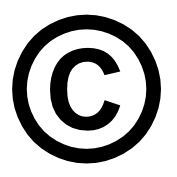
Though I’m quick to remind everyone that you don’t need to have a copyright symbol or any kind of notice on your work for it to be copyright protected, at least not since 1978 in the U.S., having a copyright footer on your site is probably a good idea just because of the large amount of confusion on this issue and it does put potential infringers on notice, reducing “innocent infringer” claims.
Besides, you don’t want people believing that your work is available for copying freely if it isn’t.
So what should you put in your copyright footer? The formula is actually very simple and there’s only a few things that you’ll likely want to include.
So, this should only take a moment to master though it can save a lot of headaches, time and money down the road.
The Four Elements
Typically, a copyright notice contains four different elements, each of which are brief but important.
- The Copyright Symbol
- The Year of the Creation
- The Name of the Author
- A Rights Statement
The copyright symbol is exactly what it sounds like, either the famous ©, a (c) or the word “Copyright”. However, most prefer to use the symbol because it is both smaller and more recognizeable.
There are several ways to make the symbol though, if you’re using HTML you can simply use the “©” command to have the symbol appear what you want. If you aren’t editing a webpage, you can easily create a copyright symbol in Windows by hitting ALT+0169 (holding the ALT key and typing “0169”) and in Mac you simply press Option+G.
The year the work is created is simply when it was finished published (with a blog this is usually the same as when it was finished, thanks @internetcases for fixing my brain lapse). This can be tricky on blogs as they can cover several years. In those cases, you can simply use a hyphen to designate a range, such as “2006-2011”. If you use WordPress (or most other advanced CMSes) you can have the latter date update automatically with just a bit of code.
The name is just your name or whatever you use to identify yourself. It can also be your business name, your site name, your pseudonym or anything else as appropriate so long as it designates who the copyright holder is.
Finally, a rights statement is nothing more than an indication in the rights you hold in the work. If you don’t wish to allow any copying (or just want everyone to ask permission), simply say “All Rights Reserved”. If you use a Creative Commons License, you likely already have this on your site but may want to further clarify with “Some Rights Reserved”. Finally, if you want to give all rights away, simply say “No Rights Reserved” and offer a clear dedication to the public domain.
All in all, it should only take you a few seconds to write a good copyright notice, but if you want any further guidance, here are a few examples below:
Tying it Together
Very quickly, here are a few examples of copyright notices that you can either work from, copy or otherwise use.
Single Year, Real Name, All Rights Reserved
© 2011 John Doe All Rights Reserved
Multi-Year, Real Name, All Rights Reserved
© 2005-2011 John Doe All Rights Reserved
Single Year, Real Name, Some Rights Reserved
© 2011 John Doe Some Rights Reserved
Multi-Year, Real Name, All Rights Reserved
© 2005-2011 John Doe All Rights Reserved
Single Year, Site Name, All Rights Reserved
© 2011 mydomain.com All Rights Reserved
Obviously, the list goes on, but you should be able to understand some of the ways you can display the notice. You can also, as mentioned above, replace the symbol with the word copyright or a “(c)” though the symbol is usually preferred.
Bottom Line
Since, for most of the world, there’s no requirement for there to even be such a notice, there’s no real rule as to what should be in it.
The main thing is to convey all of the information that others would expect from a copyright notice and the four things above should relay it fine. However, bear in mind it doesn’t have to be in the notice itself, as long as the information is somewhere on your site, as with a Creative Commons notice.
That being said, there’s also no rule that says copyright notices have to be boring. There are plenty of creative ones out there though that is a topic for another day.
Using the © symbol is an easy way to notify the world that copyright exists in your original, creative work. 
Writing the copyright notice out as: ©; followed by the year the work was created; then the name of the creator; and then finally by the phrase ‘All rights reserved’ …is a simple way to do it.
For example: © 2013 Janie Doe. All rights reserved. This line of text notifies others that the work is protected by copyright; it identifies the owner/creator of the work and lists the year of first publication. (First publication can be the first time the work was written down and distributed, even if it’s written on a napkin or scrap of paper).
You might say that it’s easy for somebody to copy my music or photograph and just leave off the copyright notice. Yes, you’re right it is easy to do and it does happen. But the good news is that you are still protected anyway and the person who copies your work and deletes the copyright notice won’t have the defense of being an innocent infringer. Down the road if a copyright dispute arises, having initially placed a copyright notice on your work could come to your rescue.
Add the copyright notice to your sheet music, photographs, music video clips, website and electronic postings to create an official notice of your copyright ownership. [Note that even if you are using the copyright symbol, it is still a good idea to register with the copyright office too! For info on copyright registration, see: http://wp.me/p10nNq-13]
BY: Vanessa Kaster, Esq., LL.M.
vk@kasterlegal.com
See also: other blog posts on related topics – “Put The World On Notice of Your Copyright“; “Copyright Protection Only Costs $35″ or As of 5/1/14 “Some Basic Copyright Claims now cost $55“; “How to use the ®, TM, SM, © symbols for trademark and copyright“; “Copyright Is Valuable, ‘The Birthday Song’ Earns $2 Million a Year In Royalties.
This short article explains the key points of copyright law – those which should be familiar to every website operator. Website operators need to know about copyright law because copyright materials are their stock-in-trade, and because dealing in copyright materials gives rise to legal risks.
Complaints of copyright infringement involving websites are relatively common; and infringement lawsuits can be ruinous. It therefore pays to be careful. Whatever one may think of the law of copyright, ignorance isn’t going to impress a judge.
The article is written from the point of view of English law. However, there is a measure of international harmonization of copyright law, and most of the points made can be validly made in relation to the copyright law of most other jurisdictions.
(1) Copyright v other IP rights
Copyright must be properly distinguished from other kinds of intellectual property (IP) right: patents, trade marks, rights in designs, database rights, and so on. Nothing, but nothing, pains the IP expert more than many journalists’ apparent belief that the different kinds of IP right are interchangeable.
(2) Copyright protects “works”
Copyright law protects a diversity of “copyright works”. It protects the oil painting, operatic symphony and poetic epic with the same principles and rules as the doodle, the advertising ditty, and the slap-dash legal article.
Although “websites” are not a kind of copyright work, their constituent elements are likely to be protected by copyright. Website text and code may be protected as literary works; photographs and other website artworks may be protected as artistic works; website music tracks may be protected both as musical works and through sound recording copyright. A single video clip can accommodate a profusion of different rights.
Simply cataloguing the different copyrights subsisting in a website can be a major undertaking.
(3) The de minimis principle
Copyright isn’t concerned with very little things. It does not protect so-called de minimis works, the classic examples of which are titles (such as The Da Vinci Code) and newspaper headlines (such as Small earthquake in Chile, not many killed); nor does copyright prevent “insubstantial copying” from a work which is protected by copyright.
Unfortunately it is often difficult to decide whether a work is really de minimis, or an example of copying insubstantial. Hence the practice, prevalent in some of our cultural industries, of demanding express permission for the least act of copying.
(This is not to say that it’s always OK to borrow others’ titles etc. Titles may, for example, be protected under the law of trade marks or passing off.)
(4) Ideas and expressions
It is sometimes said that there is no copyright in an idea. This is not entirely accurate, and is more than a little misleading. Although there is no copyright in an idea as such – i.e. an idea which has not been fixed in the form of a copyright work – that is not to say that copyright does not protect the ideas which inhere in copyright works: it does, providing the ideas are of the right kind and are not too general. For example, copyright in a story could be infringed by a person copying the plot of that story, notwithstanding that the copyist takes care to avoid lifting a single phrase from the original story. Note that the ideas underlying a web design,
no matter how specific, are probably of the wrong sort to attract the protection of the law of copyright.
(5) To credit or not to credit?
Do you have a right to be identified as the author on copies of your work? Not necessarily.
This right, the right of paternity, is one of the principal moral rights which arise in relation to copyright works. Moral rights are conceptually distinct from copyright itself. In English law (unusually) the paternity right only applies where it has been asserted by the author. So, if you licence others to use your artwork, but don’t assert the right of paternity, they may use it without crediting you!
Some of the statutory defences to a claim of copyright infringement, including the defences of “fair dealing for the purposes of research and private study” and “fair dealing for the purposes of criticism and review”, usually only apply where an author has been credited in an appropriate way.
(6) Copyright registration services
Try Googling “copyright registration”. You’ll find a plethora of different UK companies offering to help protect your works. All you have to do is submit your magnum opus and pay their fees; all they have to do is not lose your submission. Nice work.
The alleged purpose of these services is to provide evidence in the event of a court case. However, the only conceivable evidence such a company could offer is that a work was created before the time of submission. Time of creation is only occasionally an issue in copyright infringement lawsuits. We aren’t aware of a single copyright case which has even involved the evidence of such a company, let alone turned upon such evidence. So, don’t waste your money.
Note that the position regarding US copyright law is different. Registration with the US Copyright Office, although not necessary, has a number of advantages. See www.copyright.gov for details.
(7) The importance of ©
The Copyright symbol matters little nowadays: in most jurisdictions copyright subsists in qualifying works, irrespective of what symbols they wear. The use of the symbol can be a pre-condition to copyright protection under the Universal Copyright Convention in countries which are not signed up to the Berne Convention – but all the major jurisdictions are now signed up to the Berne Convention.
The use of the symbol does however have the effect of reminding people about copyright protection. If accompanied by the name of the copyright owner, it lets users know who owns the copyright – and from whom a licence should be taken. It also looks rather neat and professional.
(8) When must a licence be written?
In English law, permissions to use copyright works (also known as licences) do NOT need to be in writing. For instance, when you make a website available to the world, you grant an implied licence to internet users to copy that website for the purpose of viewing it on a web browser. However, the exact scope of implied and unwritten licences may be unclear.
There is one exception to the above rule: statutory “exclusive” licences must be in writing signed by or on behalf of the copyright owner, as must assignments (transfers) of copyright ownership.
(9) Acts of infringement
Copyright infringement isn’t just about copying. There are lots of different ways to infringe someone’s copyright, and many of them don’t directly involve copying. For instance, selling over your website CDs that someone else ripped may be copyright infringement. Again, making an adaptation of a copyright work, for instance recreating a motion picture as a cartoon strip, can infringe copyright, even if there is no literal copying.
(10) Copyright crimes
Contrary to the impression given by certain content industry propaganda, copyright infringement isn’t usually a criminal offence. Broadly speaking, in the UK, copyright infringement is only a crime if it is done deliberately in the course of a business or on a significant scale. So, downloading an infringing track for personal use may be copyright infringement, but it isn’t usually a crime.
This is a revised version of an article was originally published on www.website-law.co.uk in November 2006.





